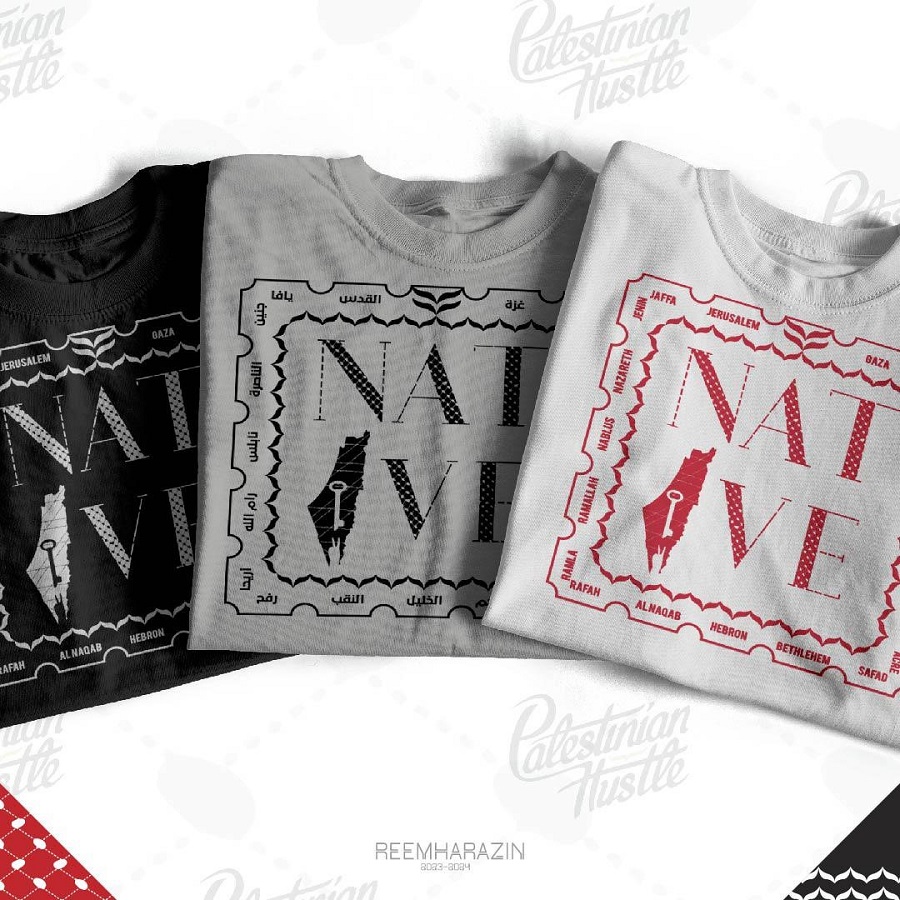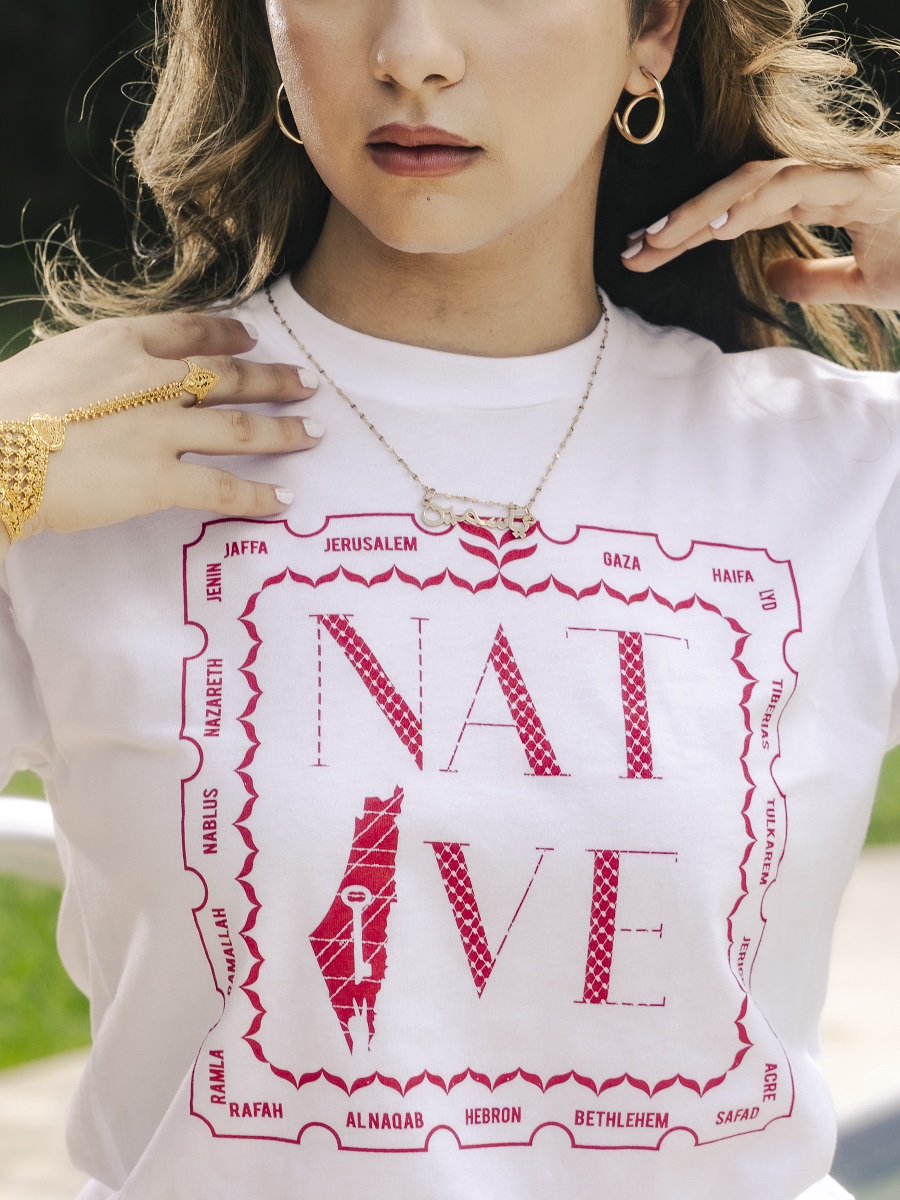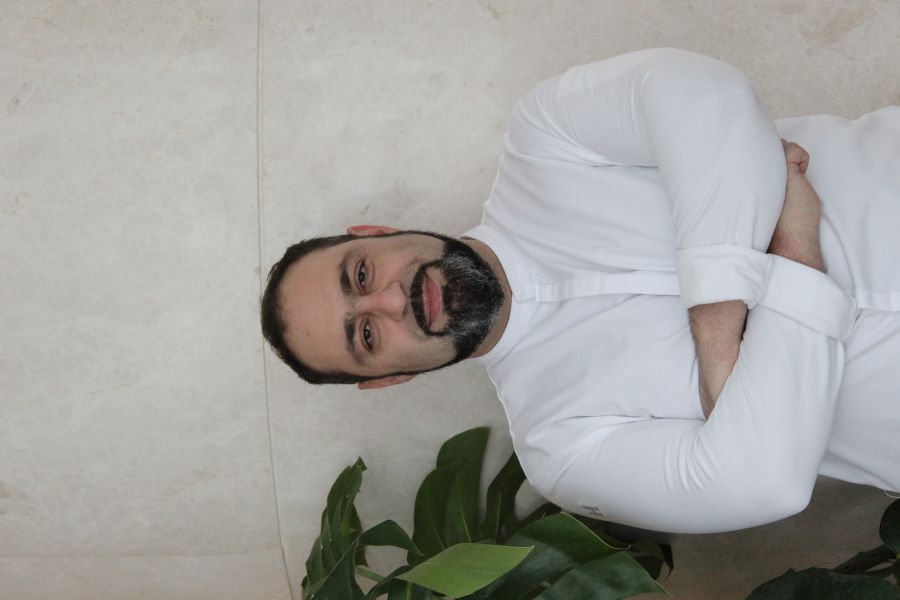DUBAI: Amid the ruins and chaos of Gaza, artist and designer Reem Harazin continues to weave the vibrant threads of Palestinian history into her work.
Her latest project, “Native” — a collaboration with the lifestyle brand Palestinian Hustle, is more than a collection of garments, it is an intricate portrayal of her people’s past and present, drawing on motifs that reflect and highlight the essence of Palestinian culture.
“Every element represents a unique facet of Palestinian history and civilization, woven together to form a vibrant narrative,” she tells Arab News. “These elements are inseparable, like the threads of a tapestry, intertwining to tell a continuous story that stretches from the past to the present.”

Her latest designs depict Palestine as it was before the 1948 occupation. (Supplied)
Her latest designs depict Palestine as it was before the 1948 occupation, showing cities unmarred by checkpoints or settlements, where people moved freely from the river to the sea.
The outer border of the “Native” T-shirt and hoodie line mirrors the walls of Jerusalem, while olive leaves like those in the pattern of the Keffiyeh — used to symbolize strength and resilience — form the inner frame.
Within the word “Native,” a fishnet pattern represents Palestinian heritage. The map of Palestine is laced with barbed wire to signify the barriers of separation across the country, alongside the keys of return held by Palestinian families and the Palestinian Liberation peace hand below.
To Harazin, the cultural elements reflected in her work are just a small part of the Palestinian people’s deep-rooted history, which she describes as being “as complex and interconnected as the branches of a tree.”

Within the word “Native,” a fishnet pattern represents Palestinian heritage. (Supplied)
She continues: “These roots are deeply embedded in the land, passed down from one generation to the next, carrying the Palestinian story forward.”
Behind the beauty of Harazin’s designs lies the harsh reality of survival in Gaza. The ongoing conflict has left her and countless others with an ever-present sense of danger.
“There’s no safe place here, not even in our own homes. Death is always lurking, a shadow that could swallow us whole in an instant,” she says.
Just days ago, she was injured while trying to escape a fresh round of violence. “It was a small injury, but it felt like a symbol of the chaos and fear we live with every day.”
Despite the constant turmoil, Harazin has found solace in her art.
“Art has been a lifeline for me,” she says. “Whenever war breaks out, I turn to drawing. It helps me process the fear, the pain, the constant barrage of negative thoughts. It’s a way to express what words can’t. It helps me remember who I was before the war; before everything changed.”
Harazin recalls picking up a pencil for the first time as a child, playing on the streets of Gaza. From those early, messy scribbles to the drawings that now capture her life story, art has always been an integral part of her life.
“I can still picture my first drawing — a strong Palestinian woman wearing traditional clothes and standing tall like a symbol of resistance. And next to her, always, was the map of our homeland, the place we dreamed of being free,” she says. That image — the strong Palestinian woman — remains a recurring theme in Harazin’s work today.
Her designs also use the rich, ancient patterns of traditional Palestinian clothing, known for bold reds, intricate embroidery, and symbols of resilience.
For Harazin, the connection between art and resistance is undeniable.
“Art is our voice, our way of saying, ‘We’re here. We matter,’” she says. “When words fail us, art speaks for us. It shows our pain, our struggles, and our unwavering spirit. Even in the darkest of times, art reminds us that there’s still beauty in the world.”
As the conflict intensifies, leaving Gaza has become nearly impossible for Harazin. She had planned to flee to Egypt, but the closure of the Rafah crossing and ongoing military operations in the area have eliminated that possibility.
“Our fate remains uncertain, and we don’t know what the future holds. All we can do is hope and pray,” she says. “In the darkest of times, we cling to our faith. It’s the only thing that keeps us going.”






















